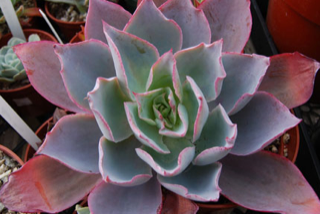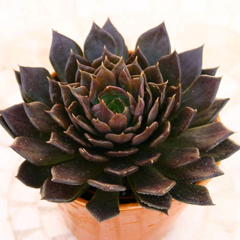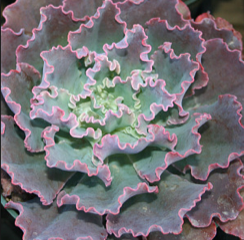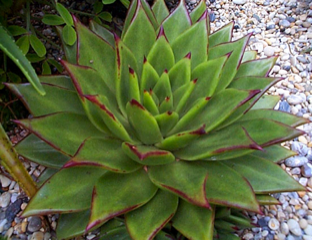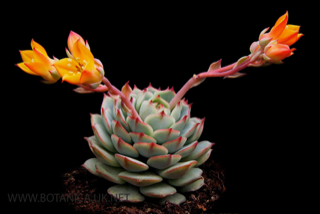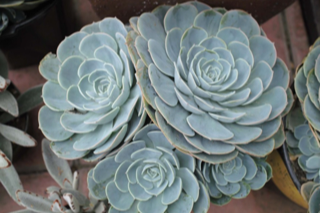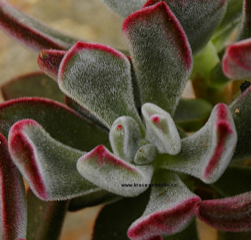Submitted by: Jim Tanner
Echeveria is a large genus of succulents in the Crassulaceae family, native from the mountains of Mexico to northwestern South America. The genus is named after the 18th century Mexican botanical artist, Atanasio Echeverría y Godoy. Many of the species produce numerous offsets, and are commonly known as ‘Hen and chicks’, which can also refer to other genera such as Sempervivum that are significantly different from Echeveria.
Many Echeveria species are popular as garden plants. They are drought resistant, although they do better with regular deep watering and fertilizing. Most will tolerate shade and some frost, although hybrid species tend to be less tolerant. They can be propagated easily by separating offsets, but may also be propagated by leaf cuttings, and by seed if they are not hybrids. Echeverias are polycarpic, meaning that they may flower and set seed many times over the course of their lifetimes.
Most lose their lower leaves in winter; as a result, after a few years, the plants lose their attractive, compact appearance and need to be rerooted or propagated. In addition, if not removed, these shed leaves may decay, harboring fungus which can then infect the plant.
LATIN LOOKUP – Loquerisne Latine (Do you speak Latin)?
The meanings of latin plant names on this page – from http://davesgarden.com/guides/botanary/
- agavoides [ah-gav-OH-id-eez, ah-gav-OY-deez]
Like the genus Agave. - derenbergii [der-en-BERG-ee-eye]
Possibly named for Dr. Julius Derenberg, 19th century German supporter of Dinter’s plant collecting expeditions to South Africa. - Echeveria [ech-eh-VER-ee-a, ech-eh-ver-EE-a]
Named for Anastasio Echeverria y Godoy, 18th century Spanish botanist. - imbricata [im-brih-KAY-tuh]
Shingled, overlapping. - pulvinata [pul-vin-AH-tuh]
Referring to a cushion.
